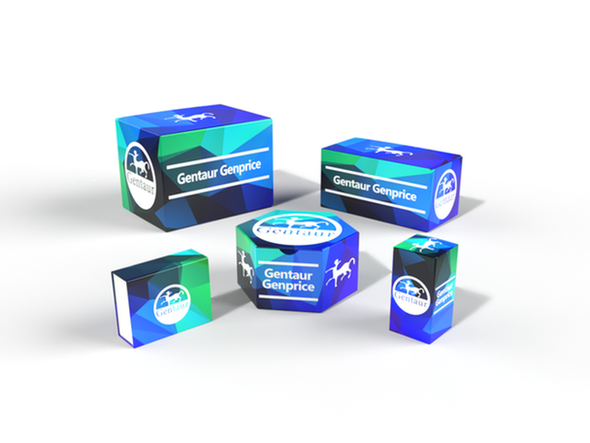Description
Persephin Antibody (biotin) | 38-120 | Gentaur UK, US & Europe Distribution
Host: Rabbit
Reactivity: Human
Homology: N/A
Immunogen: Produced from sera of rabbits pre-immunized with highly pure (>98%) recombinant hPersephin. Human Persephin specific antibody was purified by affinity chromatography and then biotinylated.
Research Area: Neuroscience, Antibody Pairs
Tested Application: E, WB
Application: ELISA:
Sandwich:
To detect hPersephin by sandwich ELISA (using 100 μL/well antibody solution) a concentration of 0.25 - 1.0 μg/mL of this antibody is required. This biotinylated polyclonal antibody, in conjunction with our polyclonal Anti-Human Persephin as a capture antibody, allows the detection of at least 0.2 - 0.4 ng/well of recombinant hPersephin.
Western Blot:
To detect hPersephin by Western Blot analysis this antibody can be used at a concentration of 0.1 - 0.2 μg/mL. Used in conjunction with compatible secondary reagents the detection limit for recombinant hPersephin is 1.5 - 3.0 ng/lane, under either reducing or non-reducing conditions.
Specificiy: N/A
Positive Control 1: N/A
Positive Control 2: N/A
Positive Control 3: N/A
Positive Control 4: N/A
Positive Control 5: N/A
Positive Control 6: N/A
Molecular Weight: N/A
Validation: N/A
Isoform: N/A
Purification: N/A
Clonality: Polyclonal
Clone: N/A
Isotype: N/A
Conjugate: Biotin
Physical State: Lyophilized
Buffer: N/A
Concentration: N/A
Storage Condition: Persephin antibody is stable for at least 2 years from date of receipt at -20˚C. The reconstituted antibody is stable for at least two weeks at 2-8˚C. Frozen aliquots are stable for at least 6 months when stored at -20˚C. Avoid repeated freeze-thaw cycles.
Alternate Name: PSPPersephinPSP
User Note: Centrifuge vial prior to opening.
BACKGROUND: Persephin is a neurotrophic factor, belonging to the GDNF family. Neurotrophic factors are important for the proper development and maintenance of the nervous system. These factors promote neuronal survival and can prevent the neuronal degeneration associated with injury, toxin exposure, or neurodegenerative disease. Persephin has a similar structure to other family members, glial cell line-derived neurotrophic factor, Artemin and neurturin. All these proteins belong to the cysteine-knot family of growth factors that assume stable dimeric structures.










